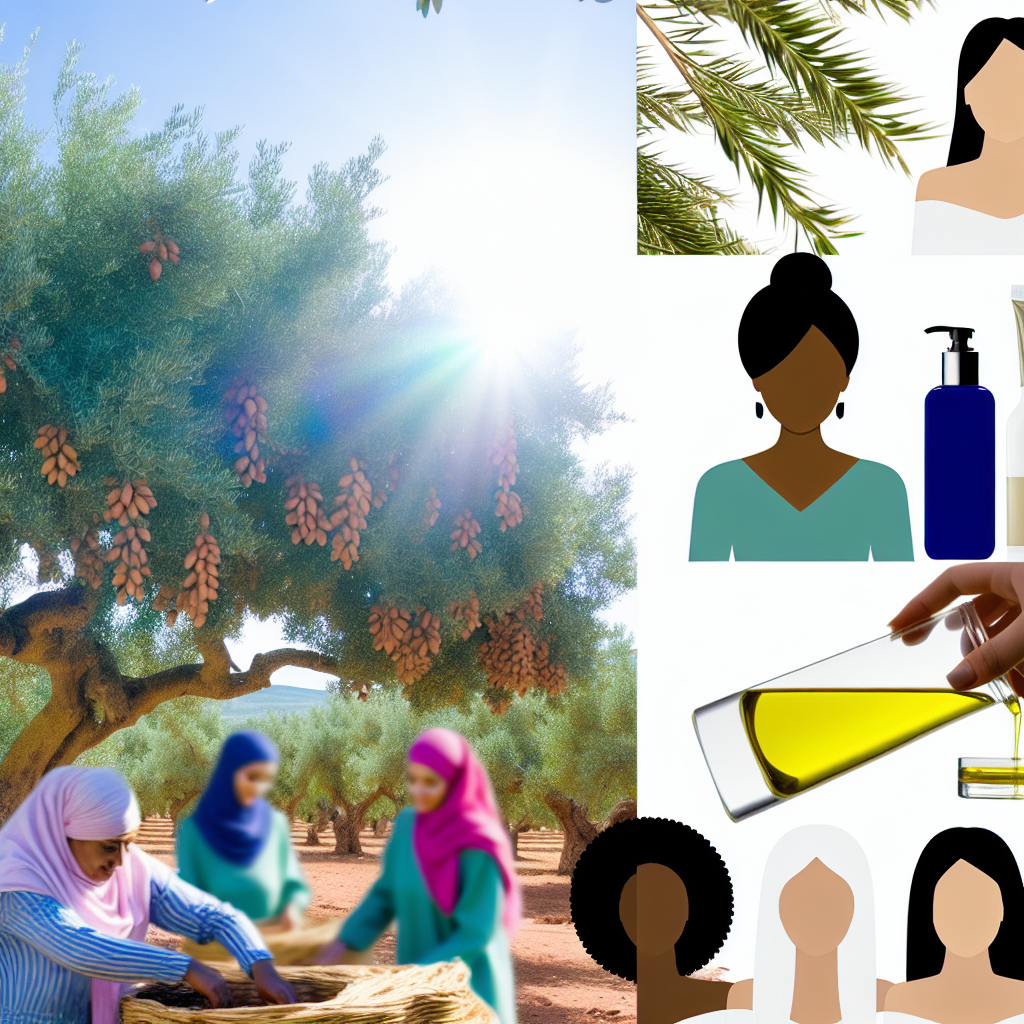Argan oil sustainability is becoming a pressing concern as the demand for this treasured oil surges, particularly in the beauty industry. The Moroccan argan trees, renowned for their oil-rich nuts, are under threat from overharvesting and the impacts of climate change. Rural women, who play a vital role in the traditional extraction of argan oil, find their livelihoods increasingly at risk as these trees begin to vanish. As consumers crave pure, premium argan oil products, global luxury brands capitalize on this trend, leaving local cooperatives struggling to compete. Thus, addressing sustainability in argan oil production is essential not only for the preservation of the trees but also for the empowerment of women cooperatives that depend on this natural resource for economic stability.
Sustainability in the production of argan oil is gaining attention as pressures mount from rising global interest. Known for its myriad benefits in skincare and cosmetics, this precious oil is integral to sustainable agriculture practices in Morocco. The cooperative model, intended to uplift local women, encounters significant challenges as the market shifts and environmental conditions worsen. As climate change reshapes the landscape that sustains argan trees, the traditional practices that have preserved this resource may face obsolescence. Addressing these interconnected issues is crucial not only for the future of the argan ecosystem but also for nurturing the communities that rely on it.
Understanding the Demand for Moroccan Argan Oil
The growing global demand for Moroccan argan oil, particularly in the beauty industry, has transformed it into a highly sought-after commodity. This rise in popularity reflects not only its versatility in skincare and haircare but also the increasing consumer awareness of natural and organic products. Luxury brands are utilizing argan oil’s nourishing properties, packaging it as a premium ingredient that commands high prices in the market. However, this surge in demand has inadvertently put immense pressure on the local argan tree population and the communities reliant on this resource.
As more companies incorporate argan oil into their products, the strain on the traditional extraction methods escalates. Local women, who have historically played a crucial role in harvesting and processing argan kernels, find themselves facing challenges as they strive to meet the demand. This situation raises questions of sustainability in both harvesting practices and fair compensation for their labor, particularly when luxury brands profit significantly more than local producers.
Frequently Asked Questions
What is the sustainability of Moroccan argan oil in the beauty industry?
The sustainability of Moroccan argan oil is a growing concern due to rising demand in the beauty industry. Overharvesting and climate change impact the argan trees’ survival, threatening both the ecosystem and the livelihoods of local women who depend on these trees for income. Sustainable practices need to be adopted to protect these resources.
How does the demand for argan oil affect sustainable agriculture in Morocco?
The increasing demand for argan oil directly impacts sustainable agriculture in Morocco by leading to overharvesting and forest decline. Sustainable agriculture practices are essential to ensure that argan trees continue to thrive, providing economic benefits to local communities while preserving the environment.
What role do women cooperatives play in the sustainability of argan oil production?
Women cooperatives are crucial for the sustainability of argan oil production as they empower local women economically and promote sustainable harvesting methods. However, as demand increases, these cooperatives face challenges that could undermine their effectiveness and the sustainability of argan oil.
What are the effects of climate change on argan oil sustainability?
Climate change significantly impacts the sustainability of argan oil production by altering growing seasons and diminishing forest health. These changes threaten the delicate balance needed for the argan trees to survive, highlighting the urgent need for climate-resilient practices.
How does overgrazing threaten Moroccan argan oil sustainability?
Overgrazing poses a severe threat to the sustainability of Moroccan argan oil by damaging tree populations and degrading the surrounding ecosystem. It undermines the regenerative potential of argan forests, directly affecting the communities reliant on these resources.
Why is fair market access important for the sustainability of argan oil?
Fair market access is vital for the sustainability of argan oil as it ensures that women cooperatives receive equitable prices for their labor. This economic fairness helps maintain traditional methods of oil production while supporting conservation initiatives necessary for the future of argan trees.
What practices are recommended for enhancing argan oil sustainability?
Enhancing argan oil sustainability involves implementing conservation practices, engaging in fair trade, and supporting women’s cooperatives. These practices can help restore tree populations, improve livelihood conditions, and ensure the continuity of traditional methods in oil production.
How can consumers support sustainable argan oil practices?
Consumers can support sustainable argan oil practices by choosing products from reputable brands committed to fair trade and ecological sustainability. Educating oneself about the sources of argan oil and supporting cooperatives directly can help ensure that production remains ethical and sustainable.
| Key Points |
|---|
| High demand for argan oil in the beauty industry is straining Morocco’s argan trees. |
| Climate change and overharvesting are leading to a decline in argan forests. |
| Local women rely on argan oil for income through traditional, labor-intensive extraction methods. |
| Cooperatives that support women’s work are challenged by rising demand and market shifts. |
| Argan trees are vital for the local ecosystem but are declining due to overgrazing and economic pressure. |
| Experts warn that without conservation and fair access to markets, the tradition of argan oil production may vanish. |
| Younger generations are moving away from traditional agriculture, threatening cultural identity associated with argan oil. |
| The impact of climate change is altering growing seasons, affecting future argan harvests. |
| There is a growing need for improved conservation practices to sustain argan forests and livelihoods. |
Summary
Argan oil sustainability is a critical issue as increasing demand in the beauty industry poses significant threats to Morocco’s argan trees. This rise in demand, exacerbated by climate change and overharvesting, jeopardizes the delicate balance of local ecosystems and the livelihoods of rural women who depend on this resource. Without enhanced conservation efforts and better economic opportunities for local cooperatives, not only is the future of the argan tree at risk, but so too are the cultural identities tied to its production. Therefore, addressing these challenges is essential to maintain both the ecological integrity and the socio-economic benefits provided by argan oil.
Source: https://www.ocregister.com/2025/08/02/morocco-argan-oil-industry/
### Transform Your Space: Orange County’s Best Remodeling Tips for Homeowners
As the real estate market in Orange County continues to thrive, homeowners in affluent communities like Laguna Beach and Newport Beach are discovering the value of high-quality remodeling projects. With median home values sitting at an impressive $1.18 million, investing in upgrades that enhance both aesthetic appeal and functionality has never been more critical. Whether you’re considering kitchen renovations or bathroom overhauls, understanding the specific needs of the OC market will help you achieve the best results for your home.
### The OC Climate: Considerations for Your Next Remodeling Project
Orange County’s unique Mediterranean climate plays a pivotal role in home renovation decisions. When planning your next project in cities like Irvine or Costa Mesa, it’s essential to consider materials that withstand both the coastal rains and hot summer sun. Beyond aesthetics, local contractors should be well-versed in California’s building codes and specific permit requirements for renovations, ensuring that your project not only looks good but is safe and compliant with all regulations.
### Opportunities for OC Contractors: Capitalizing on a Growing Market
For contractors in Orange County, the demand for quality remodeling services continues to rise as more homeowners look to invest in their properties. The affluent demographic in our region is increasingly seeking high-value renovations, with budgets ranging from $50,000 to $500,000+. It’s a prime time for contractors to establish themselves as trusted professionals. Leveraging local supplier relationships and staying updated on regulatory changes will position your business for success.
### Engaging with Local Homeowners: A Call to Action
As an OC contractor, you have the unique opportunity to connect with homeowners seeking to enhance their spaces in cities like Huntington Beach. Consider hosting workshops or providing free consultations to showcase your expertise and build trust within the community. Templates and guides tailored to common homeowner questions can also enhance your marketing strategy and highlight your knowledge of Orange County’s specific needs. Together, we can transform the region’s homes into stunning masterpieces that reflect the charm and lifestyle of Orange County.






